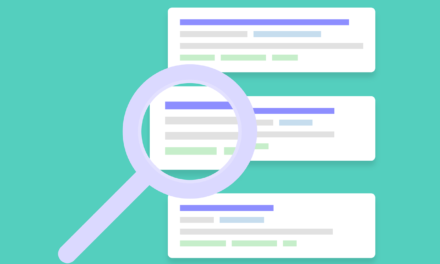We have covered before how you can track your competitor’s Google Ads campaign and get valuable insights on their data. However, what do you do once you have the data with you? How can you use this invaluable information for your own benefit?
This post shall talk about exactly that. Once you have started competitor analysis, how you can gain a sustainable competitor advantage and reap benefits for your own Google Ads campaign.
1) Create Keyword List
One of the most critical aspects of any PPC campaign on Google is creating your keyword list.
You can use Google’s keyword tool to get an idea of searches and related keywords. However, you never know how those keywords will perform for your business till you actually try them.
With competitor analysis, you do not need to waste time or money on trial and error. Once you have analysed some of your competitors, first thing you need to check is which keywords are common between each of them. Make a note of these keywords.
Second, check which keywords are getting the highest number of clicks. Between common keywords and highest number of clicks, you will have the ideal shortlist of keywords that you can use for your own campaign.
No need to spend days and weeks researching on keywords or paying service providers. You will have the best possible keyword list within a matter of an hour. Of course as spoken in previous posts on this site, you should ideally analyse at least 3 competitors. Best case would be to analyse 10 companies using similar keywords as you. If you do not know how to choose the best competitors to analyse, then read this first.
2) Separate Keywords in Two Groups
When you look at the keywords being used by each of your competitors, you need to look out for two types of keywords.
One, is the keywords that get the highest number of clicks. These are your high target keywords.
Second, is the keywords that get few clicks but are extremely cheap. Where the cost per click is much lower than other high target keywords. These are your high value keywords.
These two groups of keywords will give you a balanced PPC campaign. High target keywords usually come at an expense. The value keywords get less clicks but stretch your budget a long way.
Create a healthy mix of these two type of keywords for overall success. In fact some users create two different ad groups for each type of keyword. Over time, they end up eliminating one of the groups that is not performing as well as the other. The is one of the key benefits of competitor analysis as you get real keyword click data including cost of each of your competitors.
3) Outbid Competitors
Now that you have your final shortlist and groups of keywords, start looking at how much each competitor is paying for clicks. The cost per click will differ for each keyword.
Note down how much each competitor is paying. Some may be paying higher than others. Start by taking an average and use it for your own cost per click.
Keep in mind that cost can also depend on your quality score and historical data in Google Ads. If you feel you are not getting as many clicks as anticipated, then outbid your competitors by a very small margin.
If your sales page, keyword list and ad content are cohesive, then your quality score will improve and over time, your cost per click will automatically reduce.
4) Budget Decisions
One brilliant advantage of competitor analysis is creating an efficient budgeting process for companies.
Most companies do not know what is a good budget for PPC Google Ads. Check how much each competitor is spending. See how many clicks they get for their budget.
Accordingly allocate your finances for ads. If you are on a tight budget, take only the best performing keywords and the keywords with best value and use them for your campaign. No need for an extensive keyword list. Just use the best ones to maximize your marketing budget.
5) Content Development
When creating a PPC ads campaign, never make the mistake of ignoring your sales page content. It needs a lot of attention and ultimately is the key to the success of your marketing campaign.
Competitor analysis shows you the URLs where a user is redirected once they click on an advertisement. Please check the URLs of each of your competitors. These are their sales pages.
Go through the pages, understand how your competitors are gaining customers and create your own content accordingly.
When you know your competitor’s sales pitch, it should become easier for you to create a better one. If you work with a copywriter or professional content development team, show these URLs to them in order to have a much better sales page.
Of course along with sales page, look at the actual ads being used by competitors. You will get data on number of clicks per ad. Check which ads are getting higher clicks and replicate that content without copying the actual text.
Spend some time on content development and it will make a huge difference to your own campaign.
Get a huge competitive advantage.
Learn about your competitor’s EXACT Google Adwords campaign from which keywords they are using to cost per click, ad texts, landing page URLs, budget spend etc.





